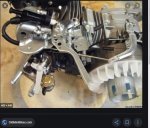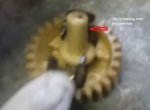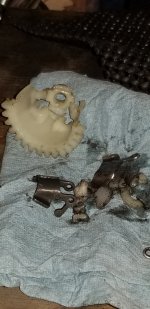Karttekk
Well-known member
Maybe someone can help me figure out the issue with a 212 Predator engine that is on an old Manco 485-03 kart I recently picked up. Previous owner had removed the rod & springs from the governor arm to the carb and throttle lever and had a homemade throttle rod from the big throttle lever to the carb butterfly along with an assortment of return springs stretched everywhere. He was able to start it with a rope and handle he cut off an old mower since the pull start was missing. He lifted the back of the kart with the engine running at WOT. I replaced the rod & springs with factory parts, readjusted the governor and even popped the side cover off the engine, the governor "looked" okay. The only way I can get the engine to slow down is hold the butterfly back manually. The image I borrowed from Old Mini Bikes is how I have mine setup. Something is big time wonky, I can't seem to narrow it down. It's something with the governor it seems.
Thanks
Thanks



